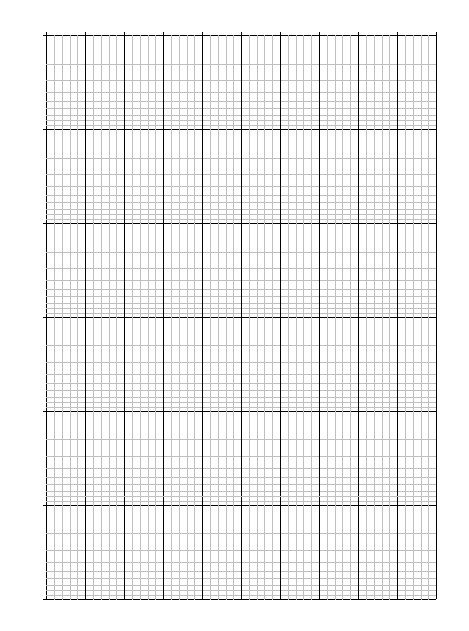Table 1: Restriction sites recognized by EcoRI and PstI
5’….G AATTC…….3’
![]()
![]()
![]() 3’….CTTAA
G……5’
3’….CTTAA
G……5’
![]() 5’….CTGCA
G…….3’
5’….CTGCA
G…….3’
3’…G ACGTC……5’
AP BIO Lab 6: Molecular Biology
Adapted from BIO-RAD Forensic DNA
Fingerprinting Kit Lab, Vernier AP Biology Lab Manual and College Board AP Biology Lab Manual
Part B: Restriction Enzyme Cleavage of DNA and Gel Electrophoresis
Background:
Scientists working in forensic labs are often asked to perform DNA profiling or “fingerprinting” to analyze evidence in law enforcement, mass disasters, and paternity cases. In this laboratory activity, you will enter into the role of a forensic scientist who has been called upon to help solve a crime. You will use forensic techniques, and the first steps will be to gather DNA found at the “crime scene” and obtain DNA samples from five “suspects”. The DNA will be digested with a fixed set of restriction enzymes, separated on a gel by gel electrophoresis, and then analyzed for patterns of similarity with the crime scene sample. From these results, you will make recommendation to identify the perpetrator.
Restriction enzymes are a special class of proteins that cut DNA at specific sites and have become an indispensable tool in molecular biology. Restriction enzymes, also known as endonucleases, recognize specific sequences of DNA base pairs and cut, or chemically separate, DNA at that specific arrangement of base pairs. The specific sequence of DNA is called a restriction site.
These unique enzymes occur naturally in some bacteria and act to protect them from invading viruses. Viruses called bacteriophages, phages for short, attack bacteria by inserting their genetic material into the bacterial cell. The phage commandeers the bacterial cell, replicating rapidly until the bacterial cell lyses and releases more phages to carry out the same infection process in neighboring cells. However, if the bacterial strain has restriction enzymes that recognize restriction sites on the invading phage nucleic acid, then enzymes can destroy the invading genetic material by digesting and inactivating the phage genes. Bacterial cells protect their own DNA from being self-digested by modifying certain nitrogen bases along their genome, this prevents their restriction enzymes from recognizing and digesting their own sequences.
Restriction Enzymes as Molecular Scissors
Gel Electrophoresis
Stains to visualize DNA
DNA Fingerprinting
The restriction sites for the restriction enzymes used in this lab's activity are noted below:
|
Table 1: Restriction sites recognized by EcoRI and PstI |
|
| 5’….G AATTC…….3’
|
EcoRI |
3’…G ACGTC……5’
|
PstI |
Your task will be to separate the DNA fragments based on size using a procedure known as gel electrophoresis and then to compare the DNA fragments with those of a standard ladder whose base pair sizes are already known.
Molecular Weight Standards (also known as Markers or Ladders):
Objectives:
In this activity, you will
• Digest DNA found at the “crime scene” and the DNA of five “suspects” with two
restriction enzymes.
• Perform agarose gel electrophoresis on DNA samples.
• Stain the gel to visualize the DNA bands.
• Document and examine gel results
Procedure:
Part A: Restriction Digestion
1. Place the tube containing the restriction enzyme mix, labeled ENZ, on ice.
2. Label the colored microtubes as follows: green tube CS = crime scene, blue
tube S1 = suspect 1, orange tube S2 = suspect 2, violet tube S3 = suspect 3, red
tube S4 = suspect 4, yellow tube S5 = suspect 5 Label the tubes with your name,
date, and lab period. Place the tubes in the foam rack.
3. Using a fresh tip for each sample, pipet 10 μL of each DNA sample from the
stock tubes and transfer to the corresponding colored micro test tubes. Make
sure the sample is transferred to the bottom of the tubes.
4. Pipet 10 μL of the enzyme mix (ENZ) into the very bottom of each tube. Use a
fresh tip to transfer enzyme to each tube.
5. Tightly cap the tubes and mix the components by gently flicking the tubes
with your finger. If a microcentrifuge is available, pulse-spin in the
centrifuge to collect all the liquid in the bottom of the tube. Otherwise,
gently tap the tube on the table.
6. Place the tubes in the foam micro tube holder and incubate for 45 minutes at
37ºC or overnight at room temperature in a large volume of water heated to 37ºC.
7. At this point you can put the DNA samples into the refrigerator and run the
agarose gel during the next class.
Part B: Agarose Gel Electrophoresis
8. Remove the digested DNA samples from the refrigerator.
9. If a centrifuge is available, pulse spin the tubes in the centrifuge to bring
all of the liquid into the bottom of the tube or gently tap on the table top.
10. Using a separate tip for each sample, add 5 μL of loading dye “LD” into each
tube. Cap the tubes and mix by gently flicking the tube with your finger.
Collect the sample at the bottom of the tube by tapping it gently on the table
or by pulse-spinning in a centrifuge.
11. Remove the agarose gel from the refrigerator and remove the plastic wrap.
12. Place an agarose gel in the electrophoresis apparatus. Fill the
electrophoresis chamber with 1x TAE buffer to cover the gel, using approximately
275 mL of buffer.
13. Check that the wells of the agarose gels are near the black (–) electrode
and the bottom edge of the gel is near the red (+) electrode.
14. Using a separate tip for each sample, load the indicated volume of each
sample into 7 wells of the gel in the following order:
Lane 1: M, DNA size marker, 10 μL
Lane 2: CS, green, 20 μL
Lane 3: S1, blue, 20 μL
Lane 4: S2, orange, 20 μL
Lane 5: S3, violet, 20 μL
Lane 6: S4, red, 20 μL
Lane 7: S5, yellow, 20 μL
15. Place the lid on the electrophoresis chamber carefully. The lid will attach
to the base in only one orientation. The red and black jacks on the lid will
match with the red and black jacks on the base. Plug the electrodes into the
power supply, red to red and black to black.
16. Turn on the power and run the gel at 100 V for 30 minutes.
17. When the electrophoresis run is complete, turn off the power and remove the
top of the chamber.
Part C: Staining the Gel
17. Your teacher will let you know which of the four staining options you will
use.
Option 1: Overnight staining using 1x Fast Blast stain
Option 2: Quick staining using Bio-Rad’s 100x Fast Blast stain (requires 12–15
minutes)
Option 1: Overnight staining using
1x Fast Blast stain
18. Stain the gel using 1x Fast Blast Stain.
a. Carefully remove the gel and tray from the gel box. Be careful because the
gel is very slippery. Slide the gel into the staining tray.
b. Add 120 mL of 1x Fast Blast stain into a staining tray (2 gels per tray).
c. Let the gels stain overnight, with gentle shaking for best results. No
destaining is required.
d. Pour off the water into a waste beaker.
e. Proceed to the Analysis section.
Option 2: Quick staining using Bio-Rad’s 100x Fast Blast stain
18. Stain the gel using Bio-Rad’s 100x Fast Blast stain.
a. Carefully remove the gel and tray from the gel box. Be careful because the
gel is very slippery. Slide the gel into the staining tray.
b. Add 120 mL of 100 x Fast Blast stain into a staining tray (2 gels per tray).
c. Stain the gels for 2 minutes with gentle agitation. Save the used stain for
future use.
d. Transfer the gels into a large washing container and rinse with warm
(40–55°C) tap water for approximately 10 seconds.
e. Destain by washing twice in warm tap water for 5 minutes each with gentle
shaking for best results.
f. Proceed to the Analysis section.
Results:
| Lambda/HindIII size marker | Crime Scene | Suspect 1 | Suspect 2 | Suspect 3 | Suspect 4 | Suspect 5 | ||||||||
| Band | Distance (mm) | Actual size (bp) | Distance (mm) | Approx. size (bp) | Distance (mm) | Approx. size (bp) | Distance (mm) | Approx. size (bp) | Distance (mm) | Approx. size (bp) | Distance (mm) | Approx. size (bp) | Distance (mm) | Approx. size (bp) |
| 1 | 23,130 |
|
||||||||||||
| 2 | 9,416 |
|
||||||||||||
| 3 | 6,557 |
|
||||||||||||
| 4 | 4,361 |
|
||||||||||||
| 5 | 2,322 |
|
||||||||||||
| 6 | 2,027 |
|
||||||||||||
Observations:
1. Write down any observations, issues that
arise or points of interest while gel is running or staining.
2. Sketch a drawing of your
final gel.
Quantitative
Analysis of DNA Fragment Sizes
1. Using a ruler, measure the distance (in
mm) that each of your DNA fragments or bands traveled from the well. Measure the
distance from the bottom of the well to the center of each DNA back and record
your numbers in the table above. The data in the table will be used to construct
a standard curve and to estimate the sizes of the crime scene and suspect
restriction fragments.
2. To make an accurate estimate of the fragment sizes for either the crime scene
or suspect DNA samples, a standard curve is created using the distance (x-axis)
and fragment size )y-axis) data from the known HindIII lambda digest (DNA
marker). Using both linear and semilog graph paper, plot distance versus size
for bands 2-6. On each graph, draw a line of best fit though the points. Extend
the line all the way to the right hand edge of the graph.
3. Decide which graph, linear or semilog, should be used to estimate the DNA
fragment sizes of the crime scene and suspects. Justify your selection.
4. To estimate the size of an unknown crime scene or suspect fragment, find the
distance that fragment traveled. Locate that distance on the x-axis of your
standard graph. From that position on the x-axis, read up to the standard line,
and then follow the graph line over to the y-axis. Where the graph line
meets the y-axis, this is the approximate size of your unknown DNA
fragment. Do this for all crime scene and suspect fragments.
5. Compare the fragment sizes of the suspects and the crime scene.
Graphs:
Linear Paper

Semilog Paper

Analysis Questions:
1. Do any of your suspect samples appear to have EcoRI or PstI recognition sites at the same location as the DNA from the crime scene? If so which ones?
2. Based on the above analysis, do any of the suspect samples of DNA seem to be from the same individual as the DNA from the crime scene? Describe the scientific evidence ( be sure to discuss base pair sizes) that supports your conclusion.
3. What are restriction enzymes? How do they work? What are recognition sites?
4. What is the source of restriction enzymes? What is their function in nature?
5. Describe the function of electricity and the agarose gel in electrophoresis.
6. What are the functions of the loading dye in electrophoresis? How can DNA be prepared for visualization?
7. A certain restriction enzyme
digest results in DNA fragments of the folllowing sizes: 4,000 base pairs, 2,500
base pairs, 2,000 base pairs, 400 base pairs. Sketch the resulting separation by
electrophoresis. Show starting point, positive and negative electrodes, and the
resulting bands.